MEGA CULTURE
Huge megalithic complex of more than 500 standing stones discovered in SpainArchaeologists says prehistoric site in Huelva province could be one of largest of its kind in Europe
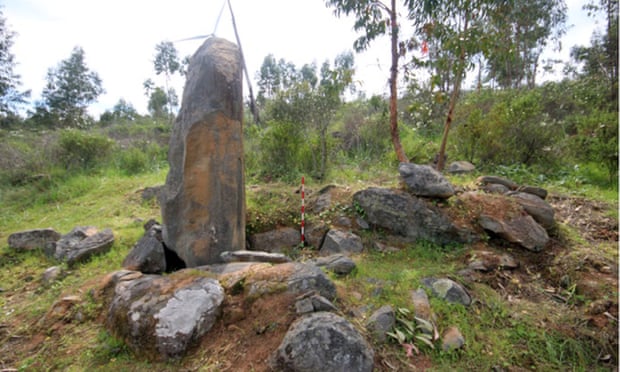
Side view of a menhir and stone platform at La Torre-La Janera megalithic site near Huelva. Photograph: Huelva Información
Agence France-Presse in Madrid
Agence France-Presse in Madrid
Thu 18 Aug 2022
A huge megalithic complex of more than 500 standing stones has been discovered in southern Spain that could be one of the largest in Europe, archaeologists have said.
The stones were discovered on a plot of land in Huelva, a province flanking the southernmost part of Spain’s border with Portugal, near the Guadiana River.
Spanning about 600 hectares (1,500 acres), the land had been earmarked for an avocado plantation. Before granting the permit the regional authorities requested a survey in light of the site’s possible archaeological significance. The survey revealed the presence of the stones.
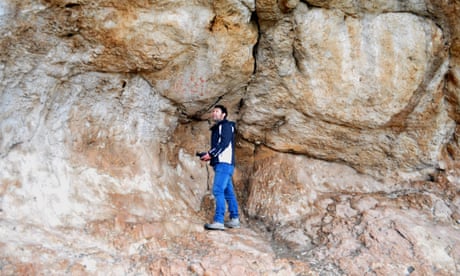
Neolithic paintings in Spain reveal art was social activity for both sexes
“This is the biggest and most diverse collection of standing stones grouped together in the Iberian peninsula,” said José Antonio Linares, a researcher at Huelva University and one of the project’s three directors. It was probable that the oldest standing stones at the La Torre-La Janera site were erected during the second half of the sixth or fifth millennium BC, he said. “It is a major megalithic site in Europe.”
At the site they found a large number of various types of megaliths, including standing stones, dolmens, mounds, coffin-like stone boxes called cists, and enclosures.
“Standing stones were the most common finding, with 526 of them still standing or lying on the ground,” said the researchers in an article published in Trabajos de Prehistoria, a prehistoric archaeology journal. The height of the stones was between one and three metres.
At the Carnac megalithic site in north-west France, there are about 3,000 standing stones.
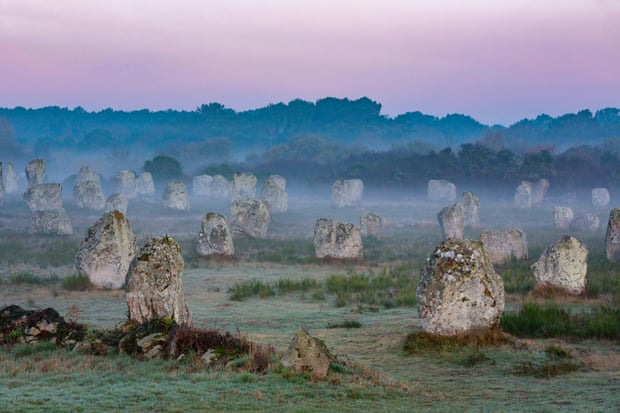
A huge megalithic complex of more than 500 standing stones has been discovered in southern Spain that could be one of the largest in Europe, archaeologists have said.
The stones were discovered on a plot of land in Huelva, a province flanking the southernmost part of Spain’s border with Portugal, near the Guadiana River.
Spanning about 600 hectares (1,500 acres), the land had been earmarked for an avocado plantation. Before granting the permit the regional authorities requested a survey in light of the site’s possible archaeological significance. The survey revealed the presence of the stones.

Neolithic paintings in Spain reveal art was social activity for both sexes
“This is the biggest and most diverse collection of standing stones grouped together in the Iberian peninsula,” said José Antonio Linares, a researcher at Huelva University and one of the project’s three directors. It was probable that the oldest standing stones at the La Torre-La Janera site were erected during the second half of the sixth or fifth millennium BC, he said. “It is a major megalithic site in Europe.”
At the site they found a large number of various types of megaliths, including standing stones, dolmens, mounds, coffin-like stone boxes called cists, and enclosures.
“Standing stones were the most common finding, with 526 of them still standing or lying on the ground,” said the researchers in an article published in Trabajos de Prehistoria, a prehistoric archaeology journal. The height of the stones was between one and three metres.
At the Carnac megalithic site in north-west France, there are about 3,000 standing stones.

Alignments of Menhirs of Menec
in Carnac, Western France. Photograph: Andia/Alamy
One of the most striking things was finding such diverse megalithic elements grouped together in one location and discovering how well preserved they were, said Primitiva Bueno, co-director of the project and a prehistory professor at Alcalá University, near Madrid.
“Finding alignments and dolmens on one site is not very common. Here you find everything all together – alignments, cromlechs and dolmens – and that is very striking,” she said, hailing the site’s “excellent conservation”.
An alignment is a linear arrangement of upright standing stones along a common axis, while a cromlech is a stone circle, and a dolmen is a type of megalithic tomb usually made of two or more standing stones with a large flat capstone on top.
Most of the menhirs were grouped into 26 alignments and two cromlechs, both located on hilltops with a clear view to the east for viewing the sunrise during the summer and winter solstices and the spring and autumn equinoxes, the researchers said.
Many of the stones are buried deep in the earth. They will need to be carefully excavated. The work is scheduled to run until 2026, but “between this year’s campaign and the start of next year’s, there will be a part of the site that can be visited”, Bueno said.
in Carnac, Western France. Photograph: Andia/Alamy
One of the most striking things was finding such diverse megalithic elements grouped together in one location and discovering how well preserved they were, said Primitiva Bueno, co-director of the project and a prehistory professor at Alcalá University, near Madrid.
“Finding alignments and dolmens on one site is not very common. Here you find everything all together – alignments, cromlechs and dolmens – and that is very striking,” she said, hailing the site’s “excellent conservation”.
An alignment is a linear arrangement of upright standing stones along a common axis, while a cromlech is a stone circle, and a dolmen is a type of megalithic tomb usually made of two or more standing stones with a large flat capstone on top.
Most of the menhirs were grouped into 26 alignments and two cromlechs, both located on hilltops with a clear view to the east for viewing the sunrise during the summer and winter solstices and the spring and autumn equinoxes, the researchers said.
Many of the stones are buried deep in the earth. They will need to be carefully excavated. The work is scheduled to run until 2026, but “between this year’s campaign and the start of next year’s, there will be a part of the site that can be visited”, Bueno said.
'Spanish Stonehenge' emerges from drought-hit dam
By Silvio Castellanos and Marco Trujillo
CACERES, Spain, Aug 18 (Reuters) - A brutal summer has caused havoc for many in rural Spain, but one unexpected side-effect of the country's worst drought in decades has delighted archaeologists - the emergence of a prehistoric stone circle in a dam whose waterline has receded.
Officially known as the Dolmen of Guadalperal but dubbed the Spanish Stonehenge, the circle of dozens of megalithic stones is believed to date back to 5000 BC.
It currently sits fully exposed in one corner of the Valdecanas reservoir, in the central province of Caceres, where authorities say the water level has dropped to 28% of capacity.
"It's a surprise, it's a rare opportunity to be able to access it," said archaeologist Enrique Cedillo from Madrid's Complutense University, one of the experts racing to study the circle before it gets submerged again.
It was discovered by German archaeologist Hugo Obermaier in 1926, but the area was flooded in 1963 in a rural development project under Francisco Franco's dictatorship.
Since then it has only become fully visible four times.

Dolmens are vertically arranged stones usually supporting a flat boulder. Although there are many scattered across Western Europe, little is known about who erected them. Human remains found in or near many have led to an often-cited theory that they are tombs.
Local historical and tourism associations have advocated moving the Guadalperal stones to a museum or elsewhere on dry land.
Their presence is also good news for Ruben Argentas, who owns a small boat tours business. "The dolmen emerges and the dolmen tourism begins," he told Reuters after a busy day spent shuttling tourists to the site and back.
But there is no silver lining for local farmers.
"There hasn't been enough rain since the spring... There is no water for the livestock and we have to transport it in," said Jose Manuel Comendador. Another, Rufino Guinea, said his sweet pepper crop had been ravaged.
Climate change has left the Iberian peninsula at its driest in 1,200 years, and winter rains are expected to diminish further, a study published by the Nature Geoscience journal showed.
Additional reporting by Susana Vera, writing by Anna Valderrama and Andrei Khalip; editing by John Stonestreet
By Silvio Castellanos and Marco Trujillo
CACERES, Spain, Aug 18 (Reuters) - A brutal summer has caused havoc for many in rural Spain, but one unexpected side-effect of the country's worst drought in decades has delighted archaeologists - the emergence of a prehistoric stone circle in a dam whose waterline has receded.
Officially known as the Dolmen of Guadalperal but dubbed the Spanish Stonehenge, the circle of dozens of megalithic stones is believed to date back to 5000 BC.
It currently sits fully exposed in one corner of the Valdecanas reservoir, in the central province of Caceres, where authorities say the water level has dropped to 28% of capacity.
"It's a surprise, it's a rare opportunity to be able to access it," said archaeologist Enrique Cedillo from Madrid's Complutense University, one of the experts racing to study the circle before it gets submerged again.
It was discovered by German archaeologist Hugo Obermaier in 1926, but the area was flooded in 1963 in a rural development project under Francisco Franco's dictatorship.
Since then it has only become fully visible four times.

Ruben Argenta drives his boat towards the dolmen of Guadalperal, which can only be seen when the Valdecanas reservoir waters become low in the outskirts of El Gordo, Spain, August 3, 2022. REUTERS/Susana Vera
Local historical and tourism associations have advocated moving the Guadalperal stones to a museum or elsewhere on dry land.
Their presence is also good news for Ruben Argentas, who owns a small boat tours business. "The dolmen emerges and the dolmen tourism begins," he told Reuters after a busy day spent shuttling tourists to the site and back.
But there is no silver lining for local farmers.
"There hasn't been enough rain since the spring... There is no water for the livestock and we have to transport it in," said Jose Manuel Comendador. Another, Rufino Guinea, said his sweet pepper crop had been ravaged.
Climate change has left the Iberian peninsula at its driest in 1,200 years, and winter rains are expected to diminish further, a study published by the Nature Geoscience journal showed.
Additional reporting by Susana Vera, writing by Anna Valderrama and Andrei Khalip; editing by John Stonestreet
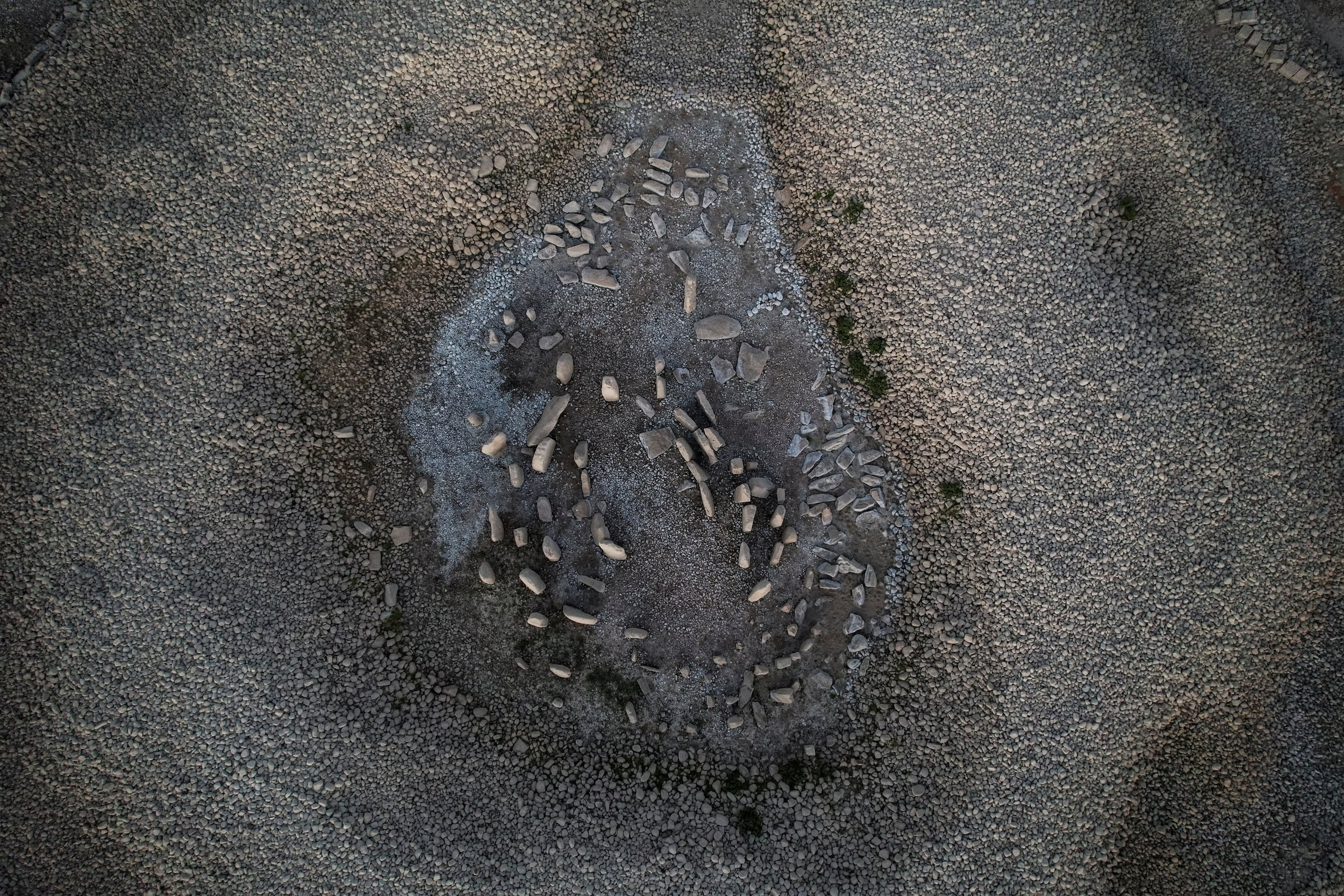

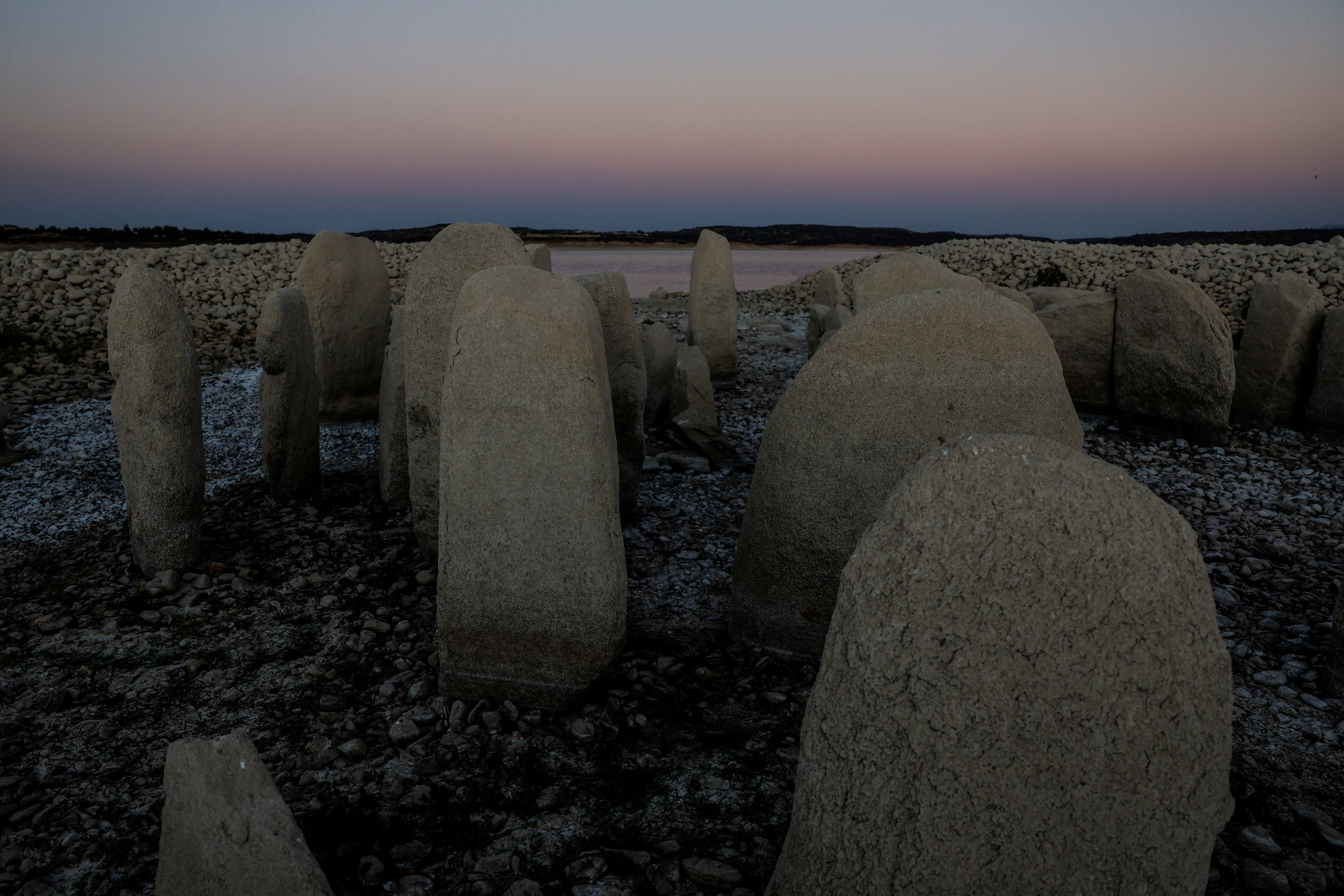

No comments:
Post a Comment